Novel set in KENT, LONDON, PARIS
Talking Location With author Holly Ringland – Australia
27th June 2018
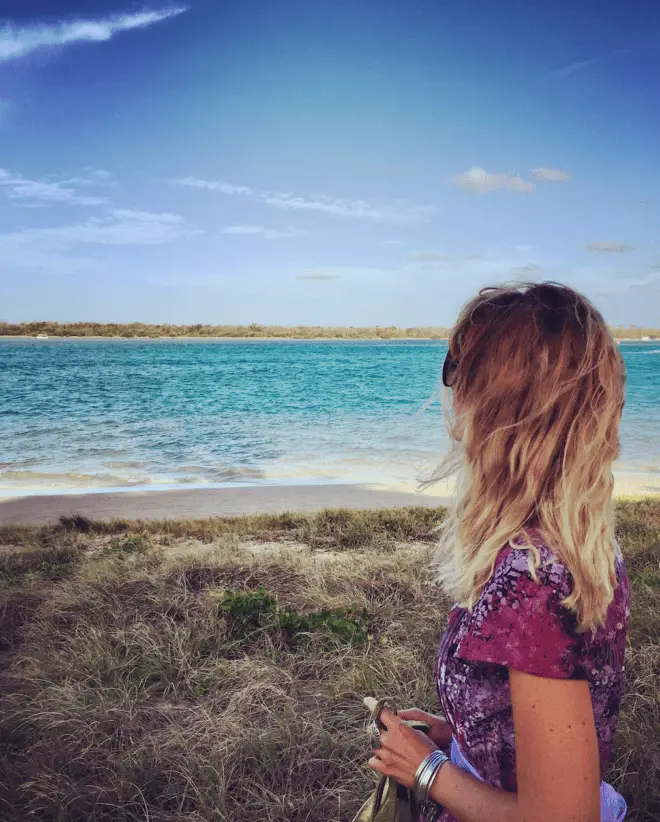
“The beach I grew up on, the Broadwater, Gold Coast, inspiration for Alice’s childhood home”
#TalkingLocationWith… author Holly Ringland, whose novel “The Lost Flowers of Alice Hart” is set in Australia.
“Memory is the fourth dimension to any landscape.” — Janet Fitch
I’ve wanted to be a writer since I was three years old, when my mother taught me to read. I grew up a block from the Pacific Ocean, on the Gold Coast, Queensland, where having to wear socks heralded a bitterly cold winter. I was always outdoors, in Mum’s garden, or at the beach, which I could smell through my bedroom window. My favourite books were ones that reflected the world I lived in, the Australian classics, Snugglepot and Cuddlepie by May Gibbs, and, Marmaduke the Possum, by Pixie O’Harris. Both were tales embedded in the Australian landscape from European storytelling perspectives. As soon as I learned to write, I starting writing stories, mostly tales about gum tree queens, butterfly elves, and wattle fairies. When Mum added Indigenous Australian books to my library, like Dick Roughsey’s The Rainbow Serpent, and, The Quinkins, my understanding of the relationship between stories and landscapes deepened. As I got older and began to choose my own books, I picked young novels and fairytales, most of which were European or American. Likewise, the television and films I watched were primarily American, sometimes English, and least likely Australian. The tendency of my imagination’s preference for story settings began to change.
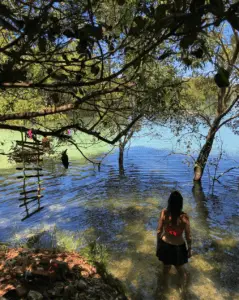
“One of my favourite rivers near home, Brunswick River, inspiration for the river at Thornfield”
When I was nine years old my family and I moved to North America. We rented a house in Vancouver, Canada, which we used as our base while we travelled in a camper van from national park to national park. Living in North America was like jumping into one of Mary Poppins’ chalk drawings; it was the place I’d read about in my beloved Judy Blume books, seen on Disneytelevision, and at the movies. North American place and culture created an exotic sense of wonder that my native Australian surroundings couldn’t match in my imagination. After we returned to Australia a couple of years later, the stories I wrote were always set overseas, even if only implicitly. It didn’t feel like a conscious decision to separate my storytelling from my home, it felt like a default setting in my imagination.
It wasn’t until I moved inland in my early twenties to live and work in an Aboriginal community in Australia’s western desert, learning and sharing culture and stories with Anangu colleagues, that my imagination started to realign. In my writing I noticed more and more of a sense of Australian people, weather, bodies of water, flowers, and bushland began to creep onto my page. When I was 29 I left Australia to move to England to give my writing dreams a wholehearted crack. The extreme contrast of my new life in moody, chilly northern England to my bright, hot home gave me a deep, renewed appreciation of the beauty and unique magic of my homeland.

A field of wild Sturt’s desert peas. As Alice Hart learns, to her family they mean, have courage, take heart. Image: DesF, via http://exploroz.com
In 2014 when I sat down and wrote the first line of The Lost Flowers of Alice Hart, it was immediately clear the story was set in Australia. I wrote the entire first draft in Manchester. My office became a trove of Australian native flora, scents, photos, and objects. I was driven to embody Alice’s world as much as possible, hungry for the sea I grew up beside, for the feeling of salty skin; for the mystifying green sugar cane fields at the end of my grandmother’s street; for the peach and silver-blue sunsets I’ve watched from my mum’s verandah; for the wildflowers and red dirt of my old desert home. Remembering the places I’ve lived in, loved and left behind caused a hunger that went through me, like first love. It was blissful, unstoppable agony to write them to life on the page.
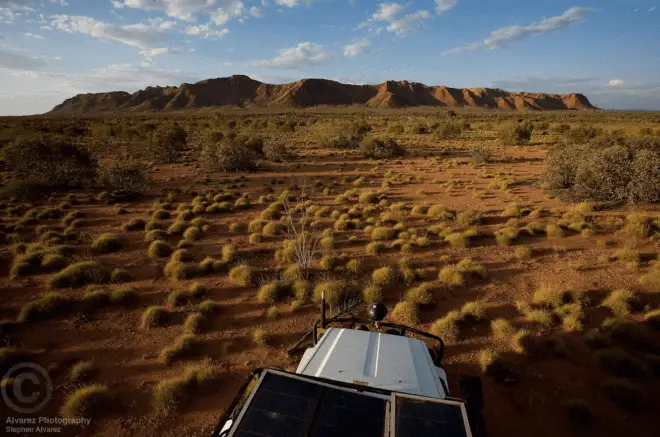
Tnorala (Gosse Bluff) exterior crater inspiration for Kililpitjara. Image: Stephen Alvarez
Spanning two decades, The Lost Flowers of Alice Hart is set between sugar cane fields by the sea, a native Australian flower farm, and a celestial crater in the desert. All the settings in the novel are informed by places and people I’ve known and loved. My experience of growing up on the southeast Queensland coast informed my portrayal of Alice’s childhood seaside world as much as my experience of living in central Australia informed my portrayal of Alice’s life in the desert. I don’t feel I could have written any of this particular book without first hand sensory knowledge and connection of the landscapes and people I’ve fictionalised. To me, fiction is emotional truth; this novel is wholly drawn from some level of understanding or experience I’ve had in my life of the diverse and dramatic Australian landscapes, and the people in them.
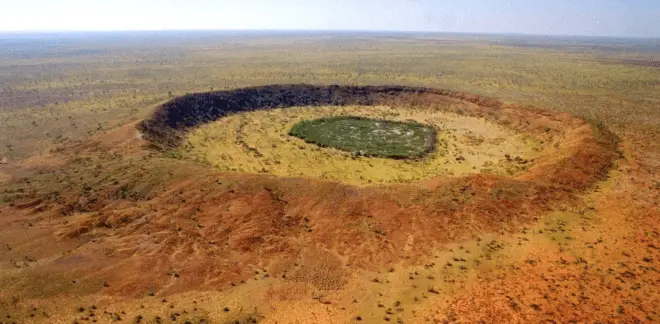
Kandimalal (Wolfe Creek Crater) inspiration for Kililpitjara. Image: Dainis Dravins – Lund Observatory, Sweden
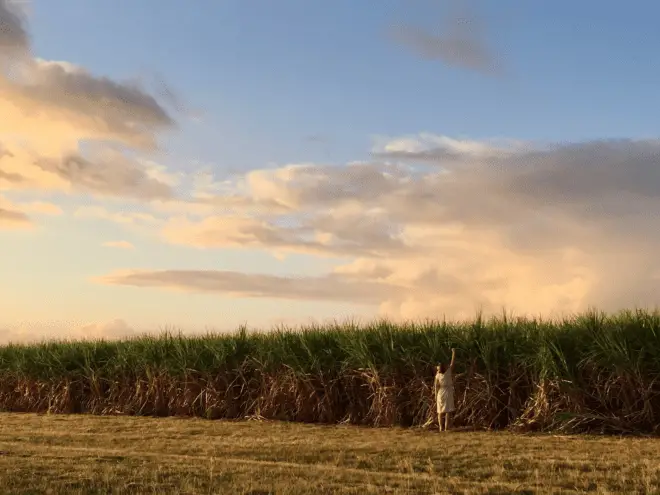
The sugar cane fields at the end of my grandmother’s street, inspiration for Alice’s childhood home.
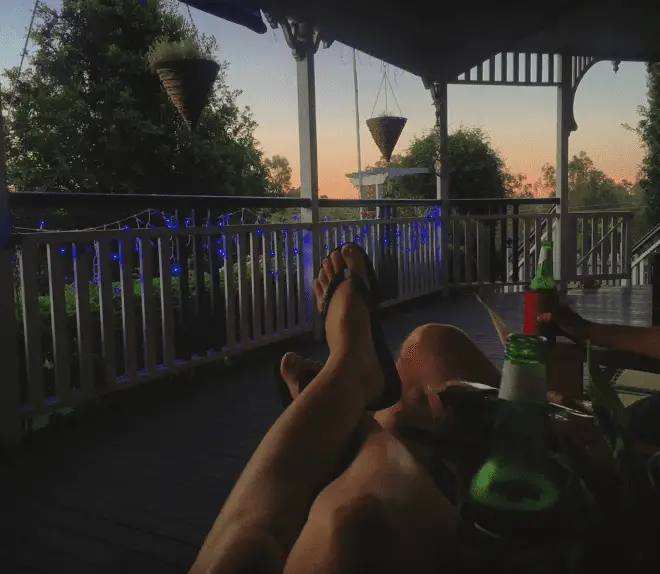
“Cold beers and peach skies from my mum’s verandah – inspiration for Thornfield’s end of work days traditions”
Thank you so much to Holly for such a brilliantly bringing to life the setting of Australia. You can follow her on Twitter and via her website
Be in with a chance of winning one of 5 copies of Holly’s book on this link (UK only, closes 7 July)
Do come and join team TripFiction on Social Media:
Twitter (@TripFiction), Facebook (@TripFiction.Literarywanderlust), YouTube (TripFiction #Literarywanderlust), Instagram (@TripFiction) and Pinterest (@TripFiction)
For more book set all around AUSTRALIA, just access the TripFiction database!

 Please wait...
Please wait...
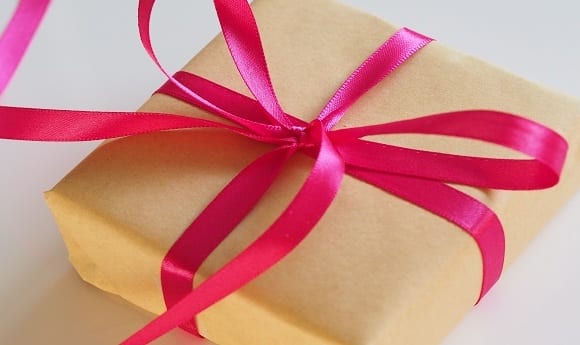
I took this book with me from Newcastle nsw to continue reading here on the Gold Coast. We drove through cane fields on the way. I seem to be following the places in the story. I haven’t been to inland Australia yet, the furthest being Lightning Ridge many years ago.
I love this book. The sense of place & the emotions that go with it. I’m amazed at the skill of Our Australian writers. Can’t wait to keep reading.
1 Comment
How lovely to hear about your #literarywanderlust and how the book is travelling with you and transporting you too! Thank you for stopping by!!!
Have just finished your book and love, love, love it. What wonderful writing on such a sensitive and , at times, sad topic. …….and the language of the flowers add such a rich, Australian touch.